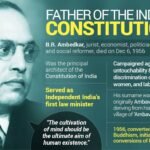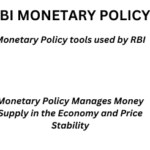November 15, ‘Janjatiya Gaurav Diwas’:Basics Explained

Last year, the Centre had declared November 15 as ‘Janjatiya Gaurav Divas’ dedicated to the memory of tribal freedom fighters. November 15 is the birth anniversary of Birsa Munda who is revered as Bhagwan by tribal communities across the country.
Birsa Munda was a freedom fighter, social reformer and revered tribal leader of the country, who fought bravely against the exploitative system of the British colonial government.
He organized and led the tribal movement, giving a call for ‘Ulgulan’ (revolt) to the tribals and encouraged them to understand their cultural roots and observe unity.
Background:
The Constitution of India provides certain privileges / concessions to the members of Scheduled Tribes which are notified under the provisions of Article 342 of the Constitution of India. First list of Scheduled Tribes in relation to a State or Union Territory is to be issued by a notified Order of the President after having consultation with the State Government concerned. Any subsequent inclusion in or exclusion from the list of Scheduled Tribes can be effected through an Act of Parliament as envisaged under clause (2) of Article 342.
The Government approved Modalities in June, 1999 as amended in June 2002, for considering proposals in regard to modifications in the lists of Scheduled Tribes and Scheduled Castes. According to the approved Modalities, amending legislation to the concerned Constitution Order is proposed only in respect of such proposals of the concerned State Government / Union Territory Administration, which have been agreed to both by the Registrar General of India (RGI) as well as the National Commission for Scheduled Tribes (NCST).
Article 342 in The Constitution Of India
342. Scheduled Tribes
(1) The President may with respect to any State or Union territory, and where it is a State, after consultation with the Governor thereof, by public notification, specify the tribes or tribal communities or parts of or groups within tribes or tribal communities which shall for the purposes of this Constitution be deemed to be Scheduled Tribes in relation to that State or Union territory, as the case may be
(2) Parliament may by law include in or exclude from the list of Scheduled Tribes specified in a notification issued under clause ( 1 ) any tribe or tribal community or part of or group within any tribe or tribal community, but save as aforesaid a notification issued under the said clause shall not be varied by any subsequent notification.
Article 366 (25) of the Constitution of India refers to Scheduled Tribes as those communities, who are scheduled in accordance with Article 342 of the Constitution. This Article says that only those communities who have been declared as such by the President through an initial public notification or through a subsequent amending Act of Parliament will be considered to be Scheduled Tribes.
Article 338
338. Special Officer for Scheduled Castes, Scheduled Tribes etc
(1) There shall be a Special Officer for the Scheduled Castes and Scheduled Tribes to be appointed by the President
(2) It shall be the duty of the Special Officer to investigate all matters relating to the safeguards provided for the Scheduled Castes and Scheduled Tribes under this Constitution and report to the President upon the working of those safeguards at such intervals as the President may direct, and the President shall cause all such reports to be laid before each House of Parliament
The list of Scheduled Tribes is State/UT specific and a community declared as a Scheduled Tribe in a State need not be so in another State/UT. The essential characteristics, first laid down by the Lokur Committee, for a community to be identified as Scheduled Tribes are –
• indications of primitive traits;
• distinctive culture;
• shyness of contact with the community at large;
• geographical isolation; and
• backwardness
The Constitution of India incorporates several special provisions for the promotion of educational and economic interest of Scheduled Tribes and their protection from social injustice and all forms of exploitation. In order to give more focussed attention to the development of Scheduled Tribes, a separate Ministry, known as the Ministry of Tribal Affairs was constituted in October 1999. The new Ministry carved out of the Ministry of Social Justice and Empowerment, is the nodal Ministry for overall policy, planning and coordination of programmes and schemes for the development of Scheduled Tribes.The mandate of the Ministry includes social security and social insurance with respect to the Scheduled Tribes, tribal welfare planning, project formulation research and training, promotion and development of voluntary efforts on tribal welfare and certain matters relating to administration of the Scheduled Areas. In regard to sectoral programmes and development of these communities, the policy, planning, monitoring, evaluation as also their coordination is the responsibility of the concerned central Ministries/Departments, State Governments and UT Administrations.
The tribal population of the country, as per 2011 census, is 10.43 crore, constituting 8.6% of the total population. 89.97% of them live in rural areas and 10.03% in urban areas. The decadal population growth of the tribal’s from Census 2001 to 2011 has been 23.66% against the 17.69% of the entire population.The sex ratio for the overall population is 940 females per 1000 males and that of Scheduled Tribes 990 females per thousand males.
Broadly the STs inhabit two distinct geographical area – the Central India and the North- Eastern Area.
More than half of the Scheduled Tribe population is concentrated in Central India, i.e., Madhya Pradesh (14.69%), Chhattisgarh (7.5%), Jharkhand (8.29%), Andhra Pradesh (5.7%), Maharashtra (10.08%), Orissa (9.2%), Gujarat (8.55%) and Rajasthan (8.86%). The other distinct area is the North East (Assam, Nagaland, Mizoram, Manipur, Meghalaya, Tripura, Sikkim and Arunachal Pradesh).
There is no ST population in 3 States (Delhi NCR, Punjab and Haryana) and 2 UTs (Puducherry and Chandigarh), as no Scheduled Tribe is notified.
Among States, Mizoram has the highest proportion of Scheduled Tribes(94.43) and Uttar Pradesh has the lowest proportion of Scheduled Tribes (0.57).
With respect to districts, Kurung Kumey district of Arunachal Pradesh has the highest proportion of Scheduled Tribes (98.58) and Kannauj in Uttar Pradesh has the lowest proportion of Scheduled Tribes (0.0009).
Khelo India Scheme, namely, “Promotion of rural and indigenous/tribal games”, is specifically dedicated to encouraging and showcasing of traditional sports of the country.
For tribal students with quality education by enabling them to attend the best Eklavya Model Residential Schools, particular focus on young girls, offering scholarship programmes
GOAL (Going Online as Leaders) is a joint initiative of Ministry of Tribal Affairs and Meta , aims at digital empowerment of tribal youth and women through concept of mentor and mentee.
IIT-Kanpur implemented ‘Tech for Tribals’ initiative which provides hands-on training to tribal entrepreneurs in Value Addition and Processing of Forest Produces operating through Van Dhan Vikas Kendras (VDVKs).




0 Comments